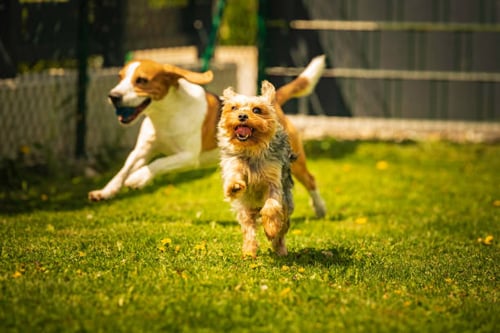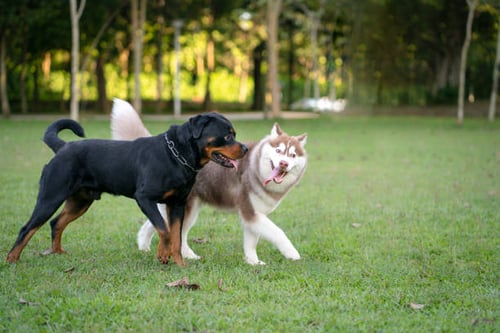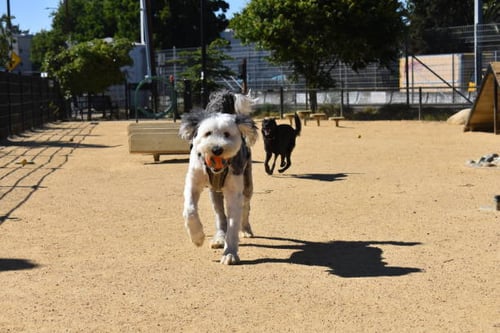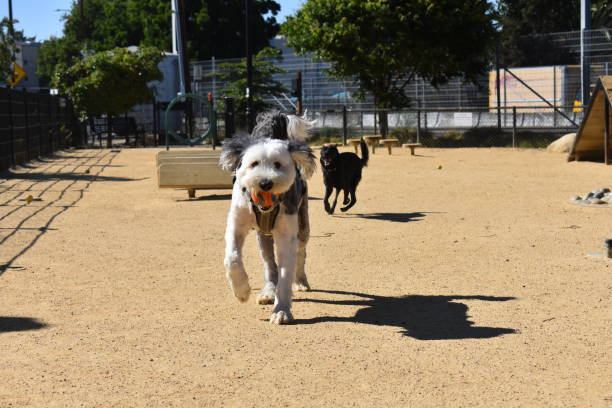Off-leash play is an essential part of a dog's life. It allows them the freedom to explore, socialize, and burn off energy. However, this freedom also comes with a degree of risk. Whether you're running a dog daycare or dog park, understanding off-leash safety is crucial. Let's dive into the guidelines that can help ensure safe and enjoyable off-leash experiences at dog parks and daycares.
Understand the Basics

Before unleashing your dog in an open space, it's important to know the fundamental elements of off-leash safety:
Know the Dog: Watch or prescreen the dog’s personality, behavior, and level of socialization. Not every dog is comfortable around other dogs, and forcing interaction can lead to fear or aggression.
Vaccination and Health Check: Ensure the dog is up-to-date with vaccinations and regular health checks. This is not only a safety measure for your pet but also for others in the park or daycare. Gingr tracks vaccinations and alerts both you and the pet parents when their pup is due for vaccines.
Safe Introductions

Introducing a dog to a new environment or new furry friends should be done slowly and carefully:
Leashed Introduction: Start by allowing the dog to explore the perimeter of the park or daycare on a leash. This gives them a chance to adjust to the new smells and sights gradually.
Observe Body Language: Pay attention to the dog’s body language and that of the dogs around them. Look for signs of discomfort or aggression, such as stiff posturing, growling, or excessive barking.
Gradual Introduction: For daycare environments, consider introducing a new dog to one or two dogs at a time, rather than placing them into the general population all at once.
Supervision and Intervention

Never leave dogs unattended in an off-leash area:
Always Supervise: Someone on our staff should always be watching the dogs. Fast intervention can prevent minor scuffles from escalating into serious fights.
Understand Canine Body Language: Understanding what dogs are communicating through their body language can help prevent conflicts before they happen. A wagging tail doesn't always mean a happy dog — look for overall body posture, facial expressions, and vocalizations.
Safe Intervention: Breaking up dog conflicts can be risky if not done correctly. Never reach in with your hands to separate fighting dogs. Instead, use distraction techniques or tools like air horns, water spray, or barrier boards.
Rules and Etiquette

Set clear rules:
-
Clear Guidelines: Whether it's a dog park or daycare, make sure all participants understand the rules. This could include restrictions on food and toys, leash-on areas, and expectations for picking up after pets.
-
Respect Size and Temperament Differences: Many parks and daycares have separate areas for small and large dogs. Understanding and respecting these spaces is crucial for the safety of all dogs.
-
Know When to Leave: Staff should recognize when a dog has had enough or when play is getting too rough. Some dogs may not know their limits and could become overtired or overstimulated.
Off-leash play can be a rewarding and enriching experience for dogs, but it's our responsibility as pet-care providers to ensure it's done safely. By following these guidelines, we can create a secure, fun environment for all our four-legged friends. Want to grow your dog daycare or dog park? Schedule a demo with Gingr today!
Subscribe to the Gingr Blog






